Top 7 Games you didn't know did it first
Virtual pioneers
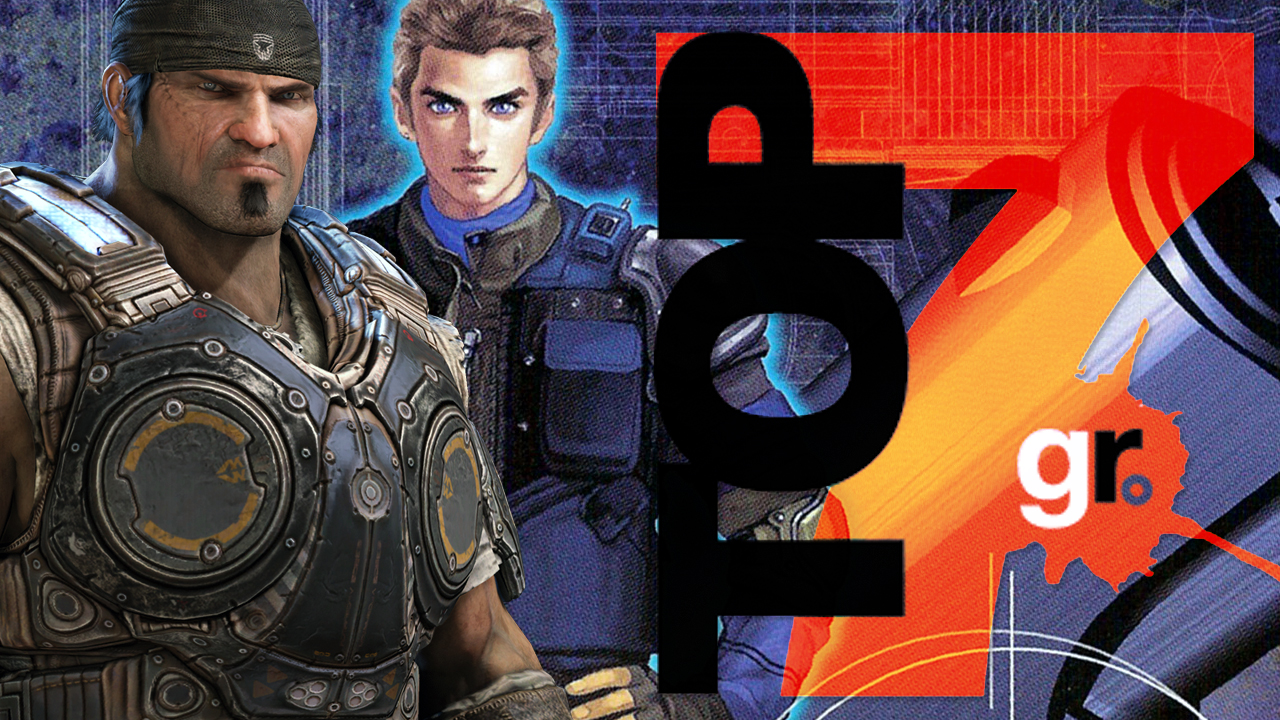
In this digital age, society seems increasingly content to equate being first with being the best. So here--let me just preempt everyone reading this by saying "First!" right here and now. Of course, that won't stop anyone; people just want to feel like they're experiencing something before anyone else, planting their flag in virgin territory. Life's not a race, but don't tell the Internet that, lest you crush the dreams of the person who posted "1st" as the seventh comment on an article.
With games, being first can go two ways. Either you're remembered as the originator of an enduring, definitive trait, or you're superseded when another, more popular title takes all the credit. So let's take a look at which games were actually first, those that dared to experiment with ideas that were once innovative (even if those concepts are now completely clich by modern standards). Sometimes, it really is worth paying homage to your precursors--the ones who paved the way for all who followed, putting forth unique ideas that just begged to be copied and iterated on.
7. Star Luster did regenerating shields first
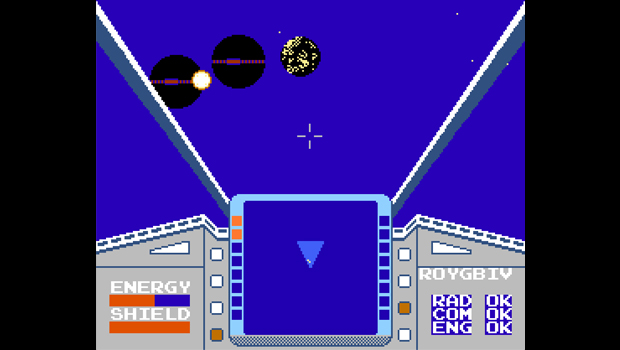
BVOOOOOOOOOM. That's the sound of Master Chief's suit recharging its protective energy barrier, which was many gamers' first introduction to the idea of regenerating shields. Of course, StarCraft's Protoss had regenerating shields as the race's defining trait, and managing your shield was critical in the first Wing Commander. There's something that's just so satisfying about a meter that acts as a buffer between your primary health bar and permanent damage--and for that, we have Star Luster to thank.
This bizarrely named space pilot sim (what, is the protagonist sexually attracted to white dwarves?) definitely isn't among Namco's best, but it's the first known game to utilize a refilling Shield gauge smack-dab beneath your precious Energy bar. Star Luster's first-person cockpit view meant you were pretty much staring at this Shield meter at all times, so you could fully appreciate all the laser blasts that were simply ricocheting off your insulating shell of electricity.
6. Final Fantasy IV did the active time battle system first

Depending on what generation of gamer you are, you probably think of Final Fantasy VII or Chrono Trigger as the first instance of the active battle system. Rather than combat playing out like a deliberate chess match, with monsters politely waiting for you to act before attacking, the ATB mechanic instills a sense of urgency into turn-based battles, where quick decision-making has tangible benefits.
Square did indeed invent the mechanic, because it first appeared in Final Fantasy IV for the Super Famicom, also known as Final Fantasy II in the US. This first iteration of ATB didn't include souped-up Limit Break attacks, but everything else functioned pretty much the same: your actions are dictated by an ever-filling gauge, which depletes when you make a move. It's the thinly veiled illusion of real-time combat, with none of the hassle!
5. Hydlide did regenerating health first
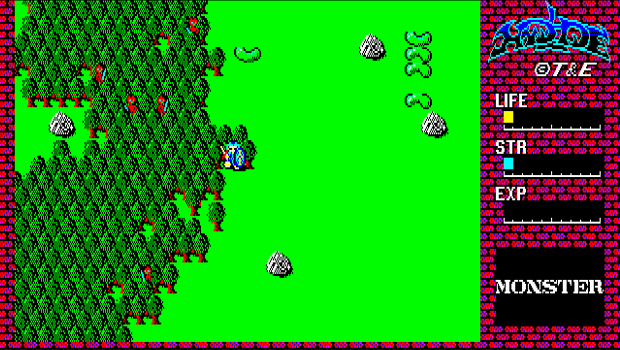
By most accounts, Hydlide is a garbage game. Released in 1984, it's one of the first prominent examples of top-down action RPG gameplay, before things like fun combat or fair difficulty had been conceptualized. And in a way, you can also blame Hydlide for the rise of blurry, red-smattered screens in modern shooters, because Hydlide pioneered the concept of regenerating health (which you can read about in greater detail right here).
Weekly digests, tales from the communities you love, and more
Whenever your oh-so-imaginatively-named hero Jim was hurting for some HP, you could stand in place to slowly regain health. And because Hydlide is a game where you're constantly roaming around in confusion whilst being battered by monsters, idling around to up your life bar became all too common. If, for whatever reason, you have a phobia of health packs or potions, you have Hydlide to thank for the solution to your troubles.
4. Crazy Taxi did the ever-present guiding arrow first
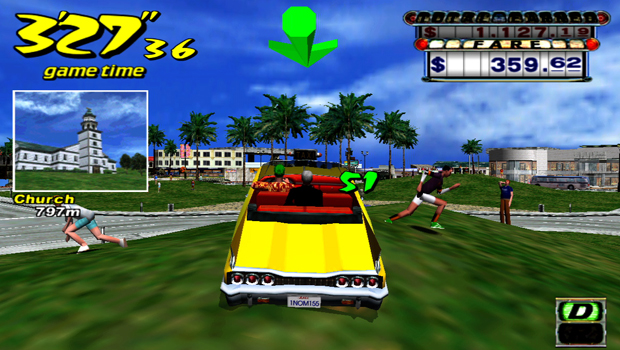
If there's one thing I learned by digging into Crazy Taxi's history (don't judge how I spend my nights/weekends/holidays), it's that the prose in U.S. patent documents is legitimately insane. Most people can easily describe one of Crazy Taxi's most memorable features: a big color-coded arrow that points you in the general direction of your destination at all times. The one in Crazy Taxi was the first of its kind, so Sega smartly snagged the rights to the feature straight away.
But the language that Sega's 1998 patent application uses to describe such a basic GPS arrow sounds like the demonic chants of an android necromancer. According to Sega, Crazy Taxi features "a game display method for moving to a destination in a virtual space a movable object which is moved in the virtual space, comprising the step of: displaying at a prescribed position in the virtual space a virtual object which indicates a direction from the prescribed position to the destination." I don't mean to step out of line here, Sega, but WHAT IN THE EVER-LOVING FRACK ARE YOU TALKING ABOUT?!
3. Winback did third-person cover first
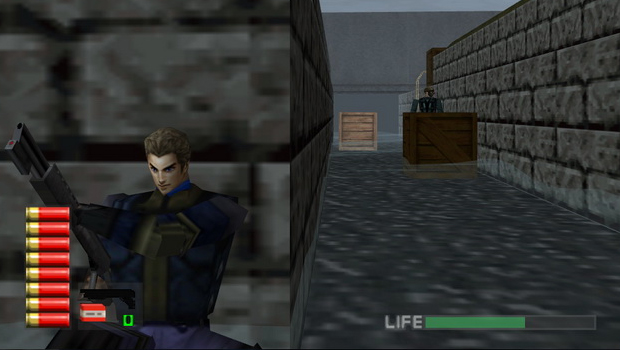
Chest-high walls became the rage after Gears of War, which made duck-and-cover firefights the norm for all third-person shooters that followed. Cliff Bleszinski--being the good guy game developer that he is--gives credit where credit is due, citing Namco's bland-looking military shooter Kill.Switch as one of Gears' primary gameplay inspirations. But Kill.Switch's distinguishing features are something of a sham, because blind-fire had already been done in Metal Gear Solid 2: Sons of Liberty, and the forerunner of cover-centric third-person gunplay was Winback: Covert Operations.
This massively overlooked N64 shooter was way ahead of its time in 1999, and got largely ignored twice in a row after the PS2 rerelease in 2001. As pretty boy Jean-Luc Cougar, an agent in the fecal-sounding anti-terrorist organization S.C.A.T., your mission was to play peek-a-boo with gun-toting maniacs, poking your head out of cover every so often to fire off a couple lethal potshots. Winback also lifted the spine-to-wall magnetism from Metal Gear Solid wholesale, so it's only fair that MGS2 borrowed some of Winback's mechanics right back.
2. Doctor Hauzer did cel-shading first
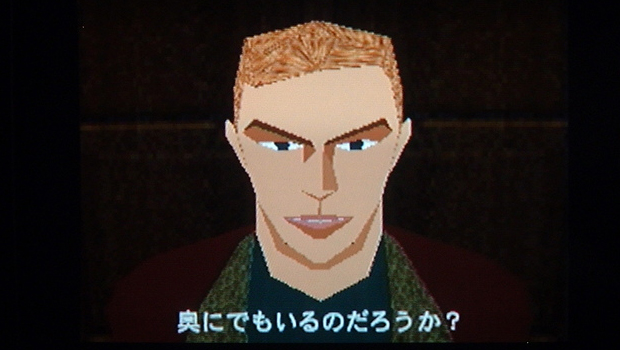
Bear with me, because this rabbit hole goes pretty darn deep. Most people think 2000's Jet Set Radio (or Jet Grind, for US folks) was the progenitor of cel-shading, the striking visual style that uses lighting trickery to give graphics a flat, cartoony look. But JSR was beaten to the punch by Fear Effect on PS1 a year prior--and before even that, there was the now ludicrously obscure first-person adventure Goosebumps: Attack of the Mutant on PC in 1997.
But by my estimation, the first instance of video game cel-shading came from the most unlikely of sources: a 1994 survival horror joint on 3DO that was only released in Japan. Doctor Hauzer's spooky interiors look like most primitive 3D games, but the good doctor's stark facial textures appear to be the prototype for the cel-shading aesthetic we now know and love. All that's missing are some ever-present, bold black outlines on Hauzer's person.
1. Requiem: Avenging Angel did bullet time first

And all this time you thought Max Payne was the first dude to this party. Slow-motion action scenes were the new hotness after The Matrix blew people's minds, and video games provided the perfect avenue to control that kind of decelerated combat. While Remedy Entertainment's noir gunman made bullet time popular, Max Payne's signature gameplay hook had already been done two years earlier--in an FPS starring an angel named Malachi who's packing heat.
Requiem: Avenging Angel was actually ahead of the curve in many ways, with an intriguing story about God sending down his servants to sabotage humanity's rapidly advancing technology. The out-there concept lent itself to some imaginative environments (that rival System Shock 2 in terms of atmosphere) and a suite of damn inventive powers. One of those powers was Time Warp, which let you slow down the firefights to a crawl so you could weave around enemies and set up lethal shots. Apparently, not enough people played Requiem for its ideas to make their mark--which is a shame, because you could also turn soldiers into pillars of salt. That's awesome.
The word of the day is: primogenial
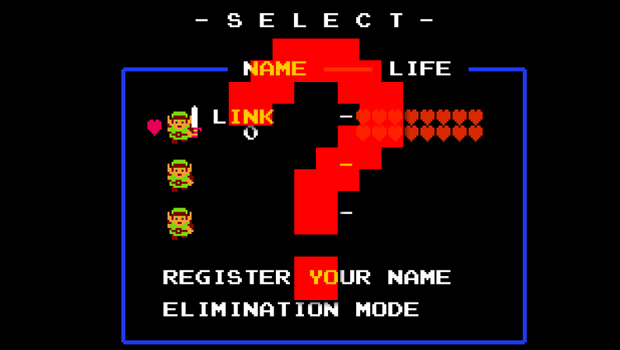
Think Wolfenstein 3D did first-person shooting first? Nah, dawg--that was all Maze War. Know of any great firsts (like The Legend of Zelda, pictured above, which was the first console game with save slots)? Why not tell us all about it in the comments and be the FIRST to do so! Hyuk-hyuk! OK, I'm going back to my hole now.
And if you're looking for more excellent Top 7s, check out Top 7... reasons it's awesome to be a gamer and Top 7... Games where the bad guys actually win.
Lucas Sullivan is the former US Managing Editor of GamesRadar+. Lucas spent seven years working for GR, starting as an Associate Editor in 2012 before climbing the ranks. He left us in 2019 to pursue a career path on the other side of the fence, joining 2K Games as a Global Content Manager. Lucas doesn't get to write about games like Borderlands and Mafia anymore, but he does get to help make and market them.



